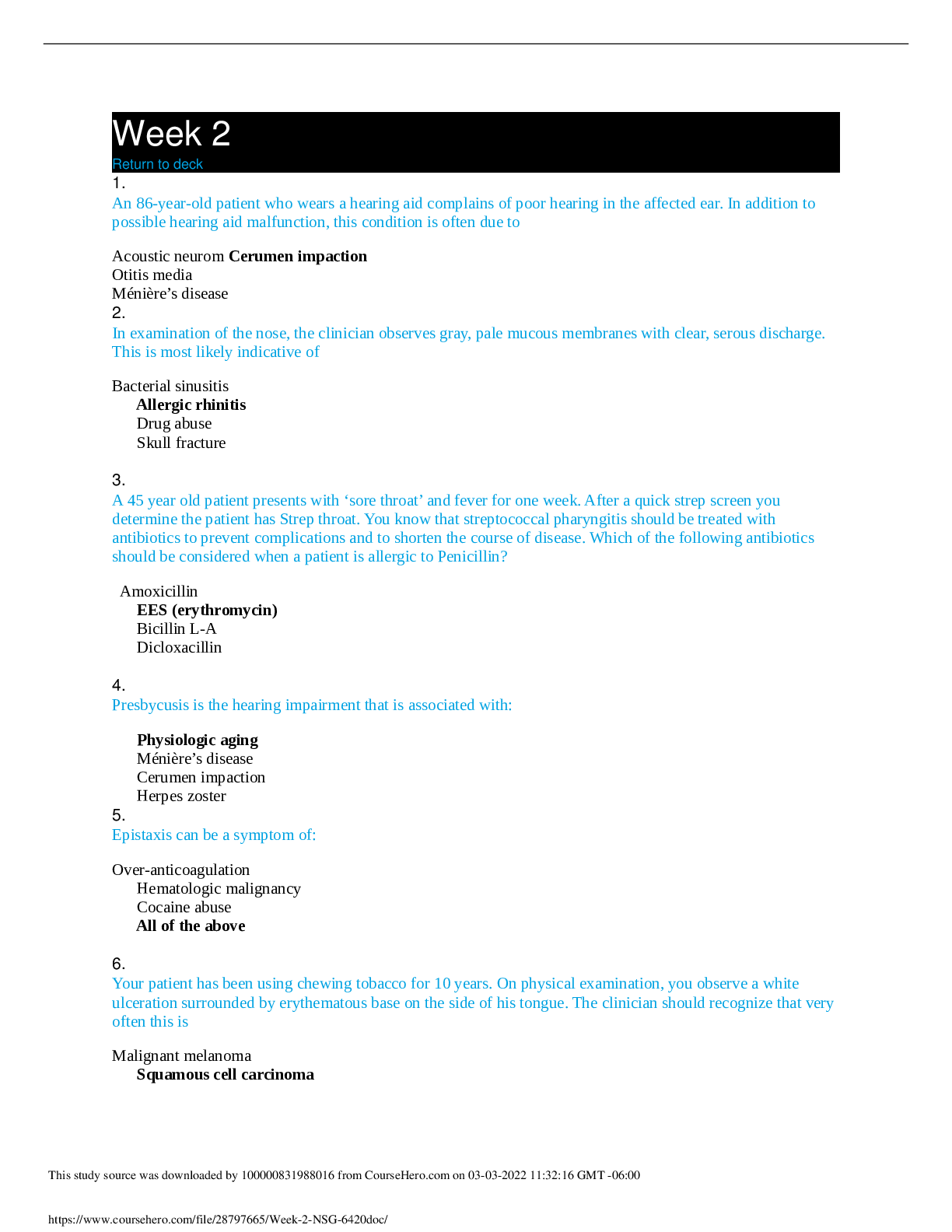TNCC 9TH EDITION EXAM 50 MCQs QUESTIONS AND ANSWERS GRADED A+
Document Content and Description Below
1. An adult patient who sustained a severe head trauma has been intubated and is being manually ventilated via a bag-mask device at a rate of 18 breaths/minute. The patient has receive one intravenous... fluid bolus 500 mL of warmed isotonic crystalloid solution. The PaCO2 is 30 mm Hg (4.0 kPa), and the pulse oximetry is 92%. BP is 142/70 mm Hg. What is the most important intervention to manage the cerebral blood flow? A. Decrease the rate of manual ventilation.*** B. Initiate another fluid bolus. C. Recheck endotracheal tube placement. D. Increase the amount of oxygen delivered. 2. A patient with complete spinal cord injury who is in neurogenic shock will demonstrate hypotension and which other clinical signs? A. Bradycardia and ipsilateral a sense of motor function. B. Tachycardia and respiratory depression. C. Tachycardia and piokilothermia. D. Bradycardia and absent motor function below the level of injury.*** 3. You are caring for a patient who was shot multiple times in the chest and abdomen. The patient is unresponsive with snoring, shallow respirations. Assessment reveals absent radial pulses, weak and rapid carotid pulse, and cool, diaphoretic skin. Which management strategy should the nurse anticipate? [Show More]
Last updated: 1 year ago
Preview 1 out of 17 pages
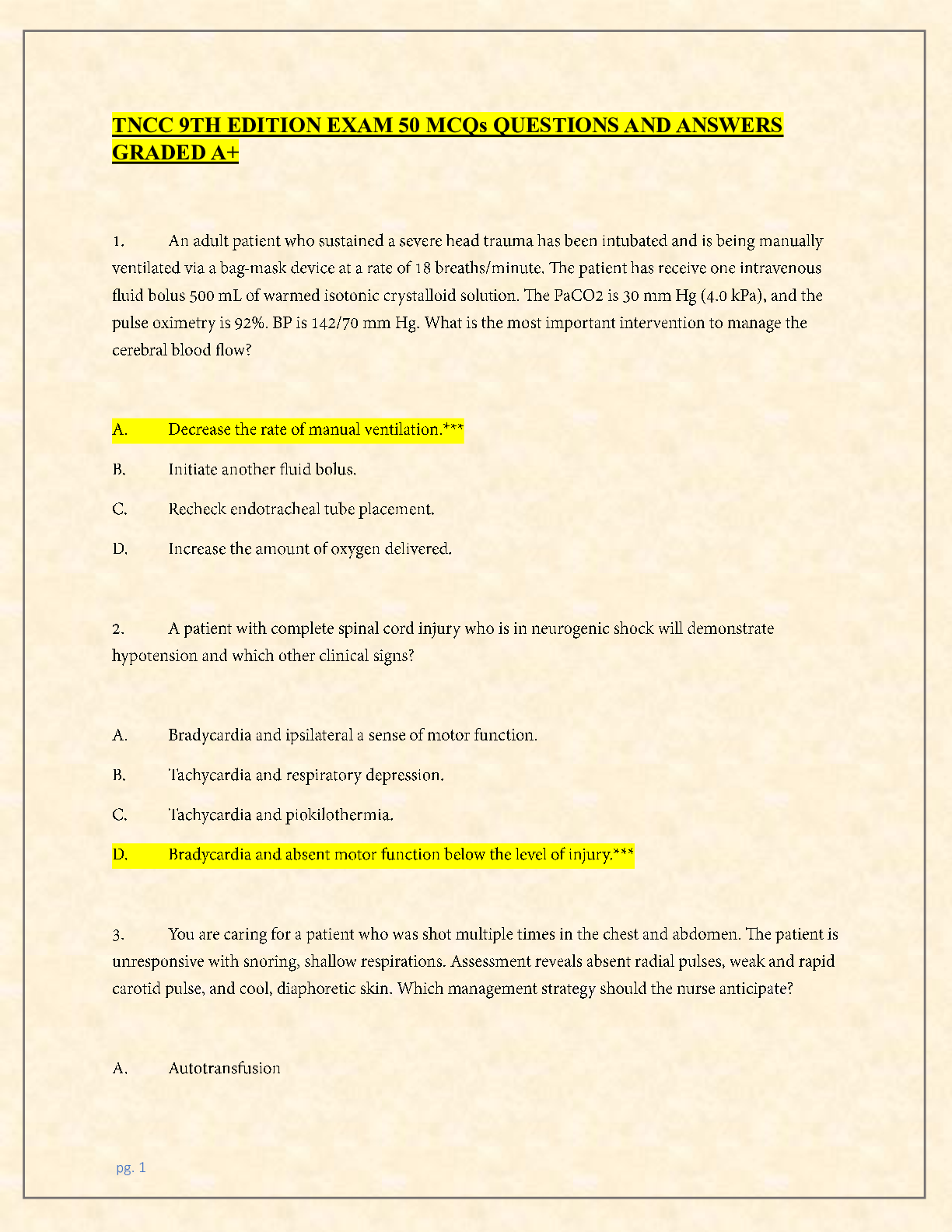
Buy this document to get the full access instantly
Instant Download Access after purchase
Buy NowInstant download
We Accept:

Reviews( 0 )
$10.50
Can't find what you want? Try our AI powered Search
Document information
Connected school, study & course
About the document
Uploaded On
Apr 30, 2024
Number of pages
17
Written in
Additional information
This document has been written for:
Uploaded
Apr 30, 2024
Downloads
0
Views
62


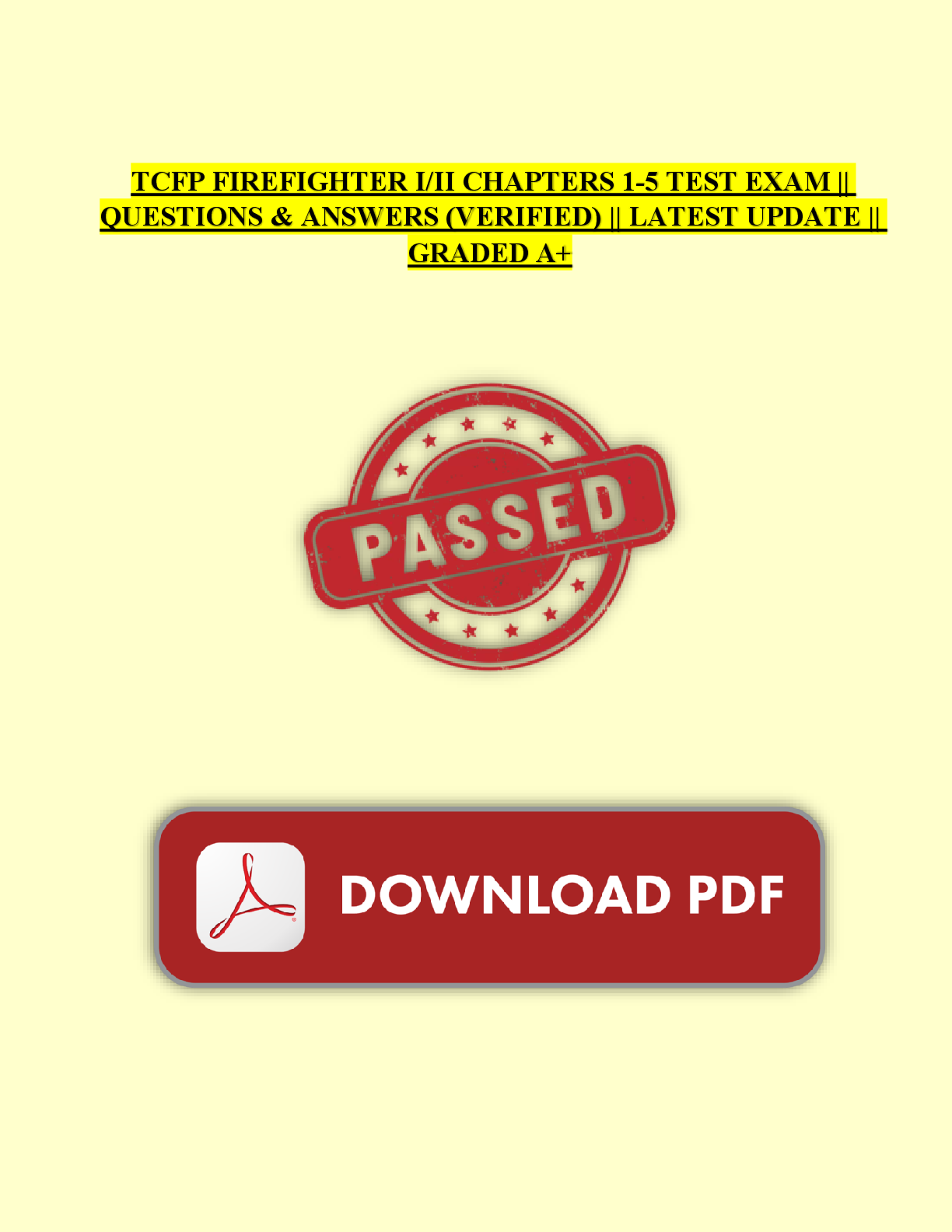
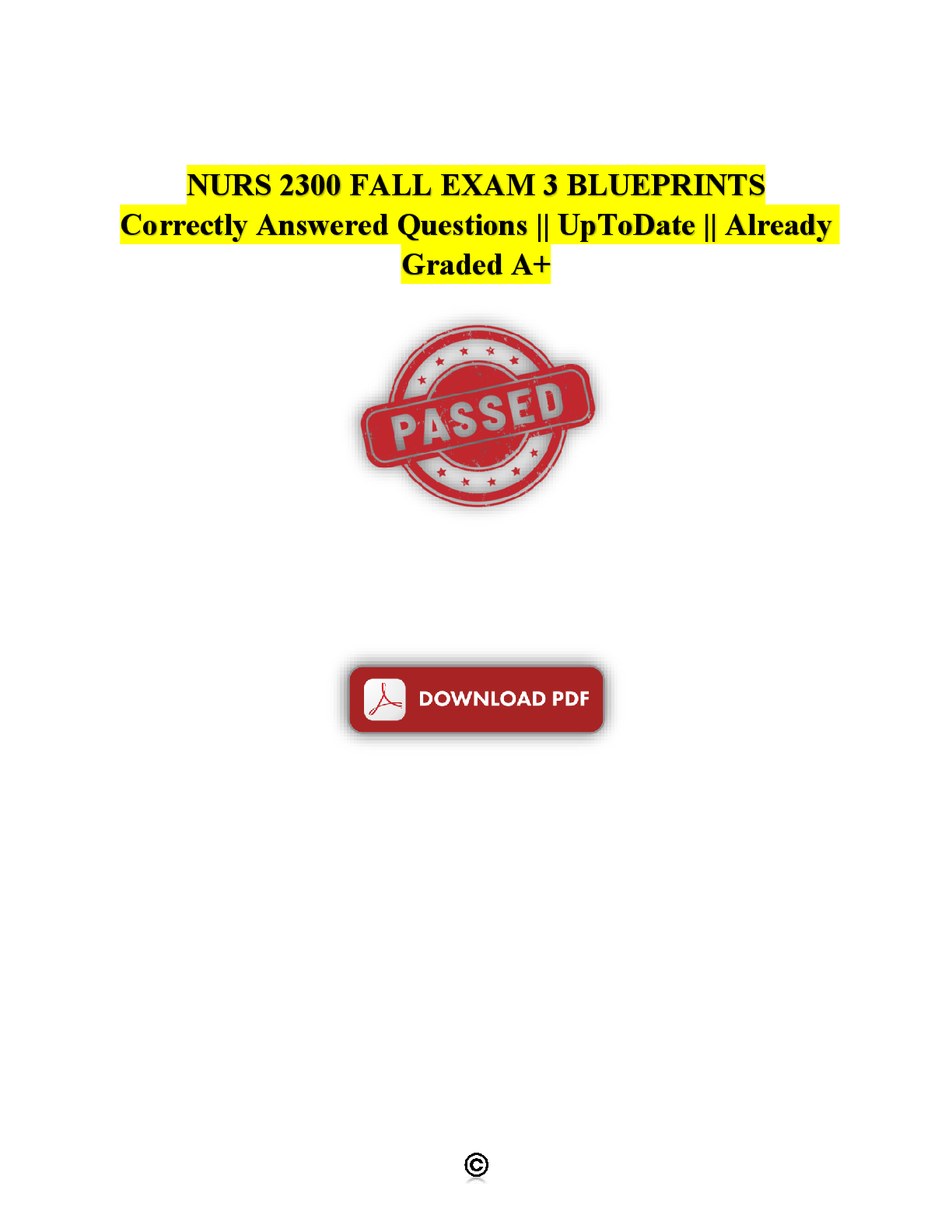

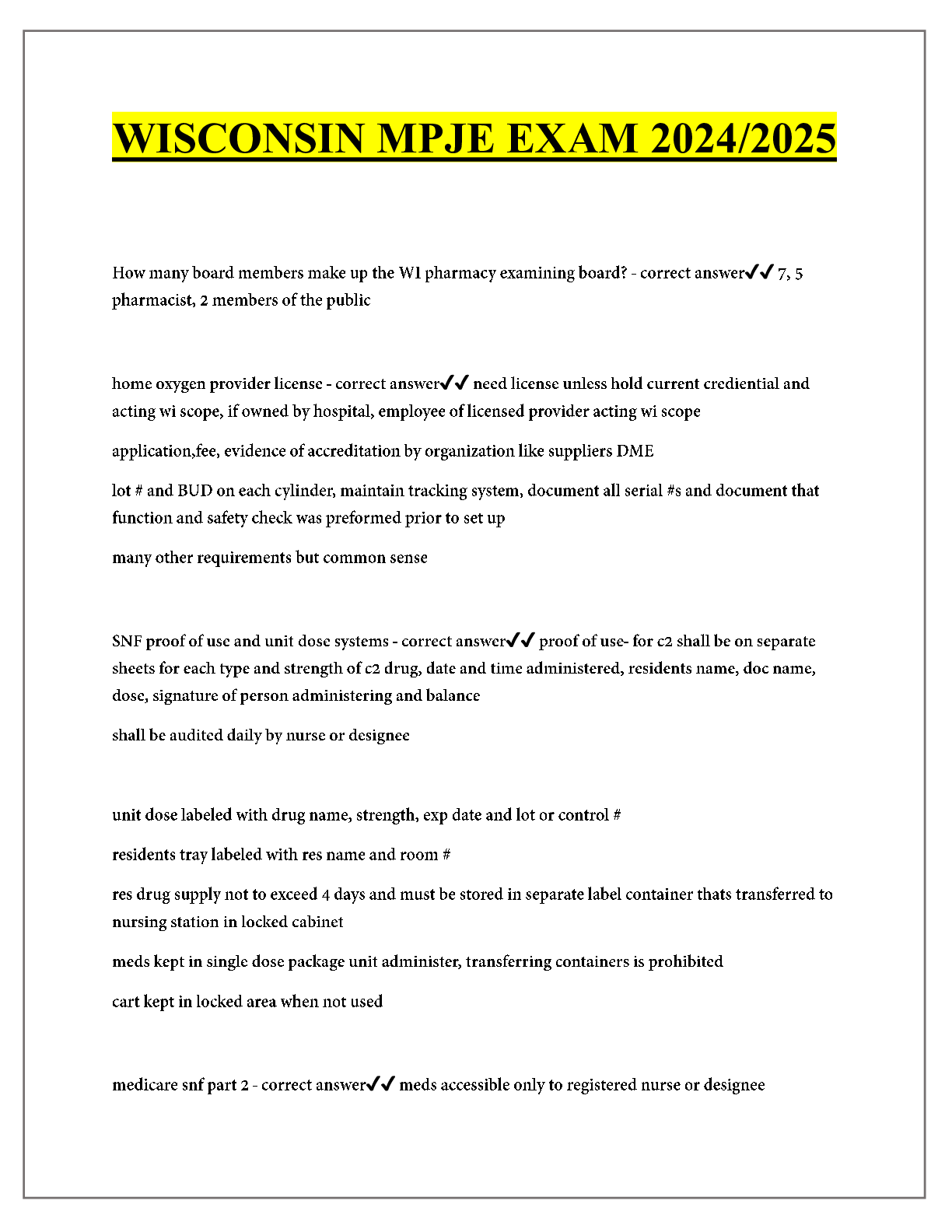
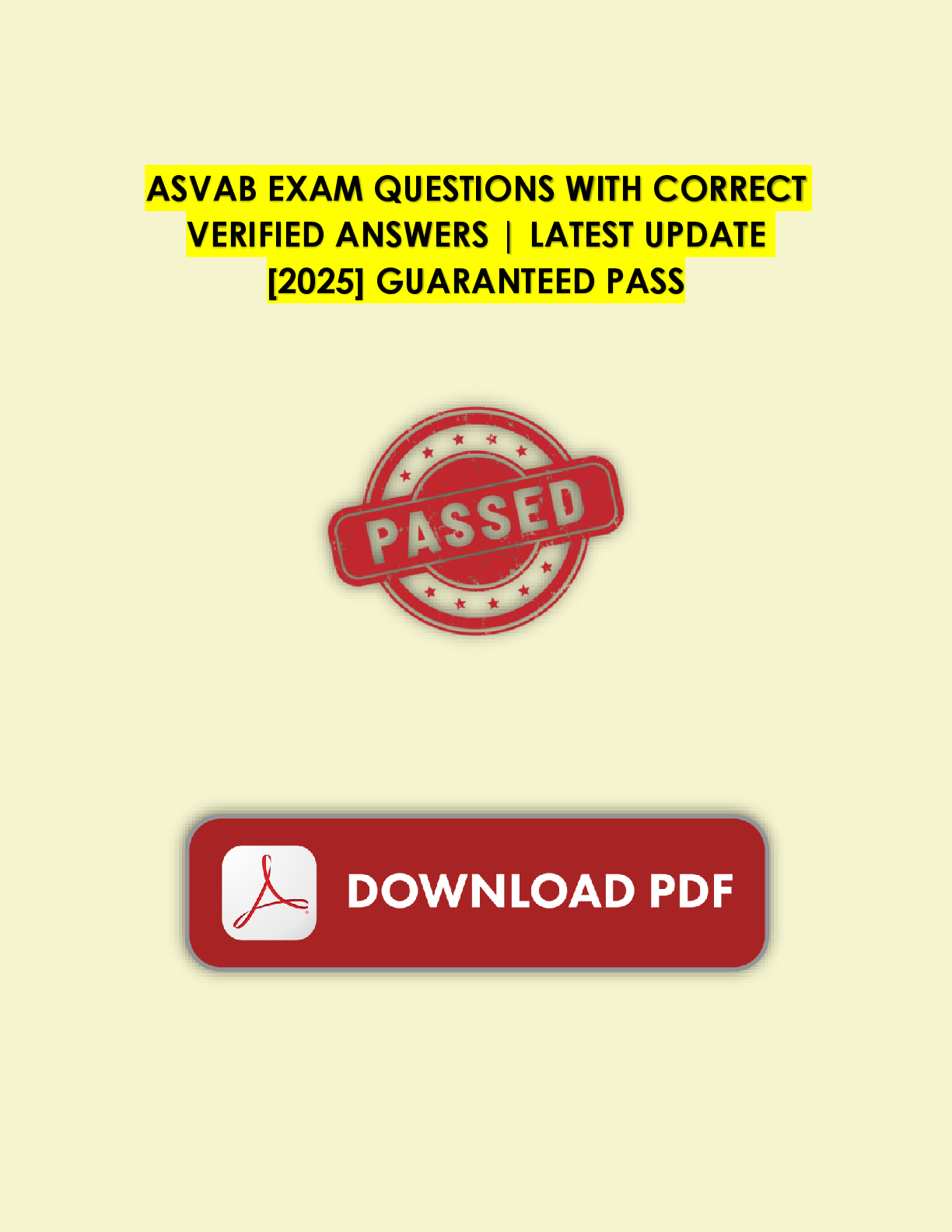
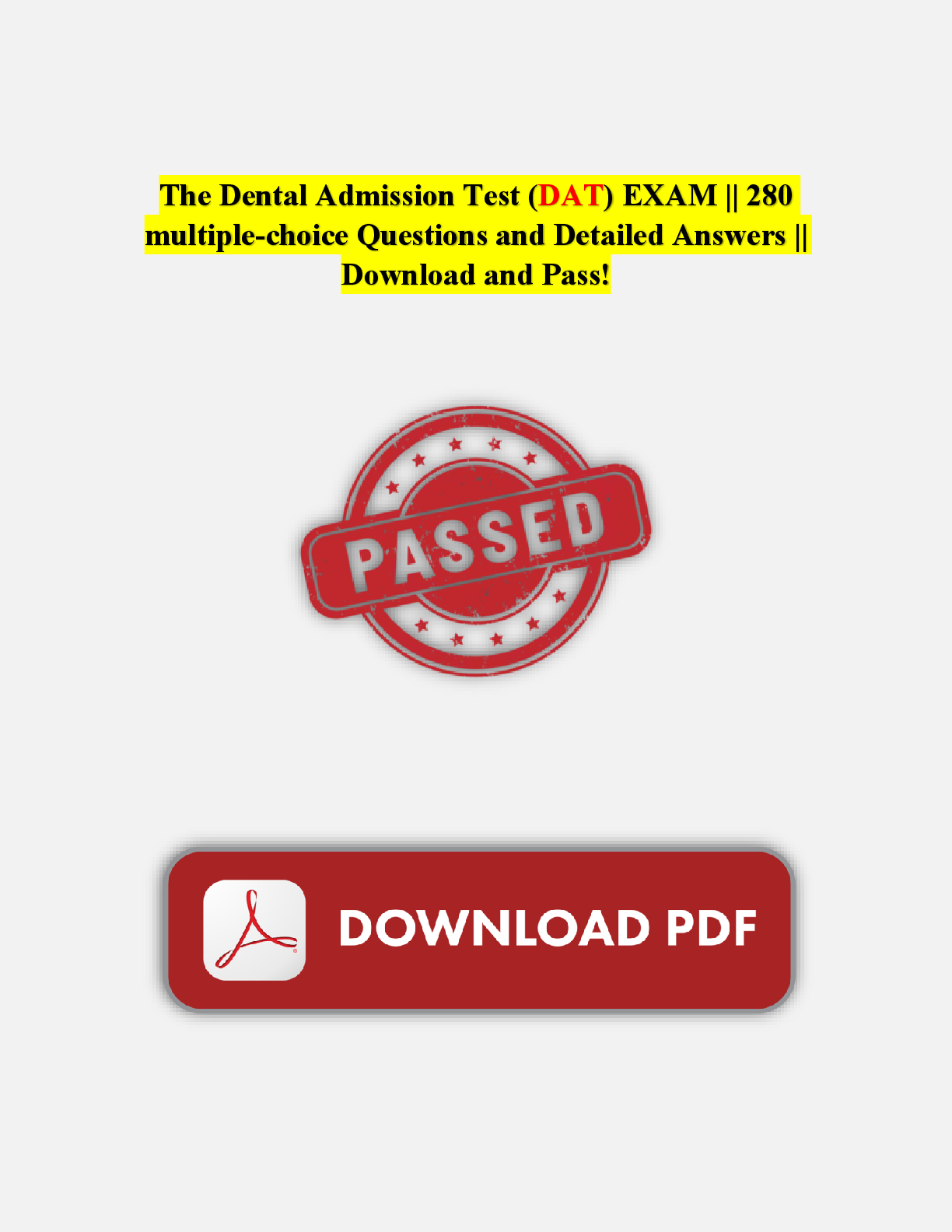

.png)
 Block 1 to 7.png)




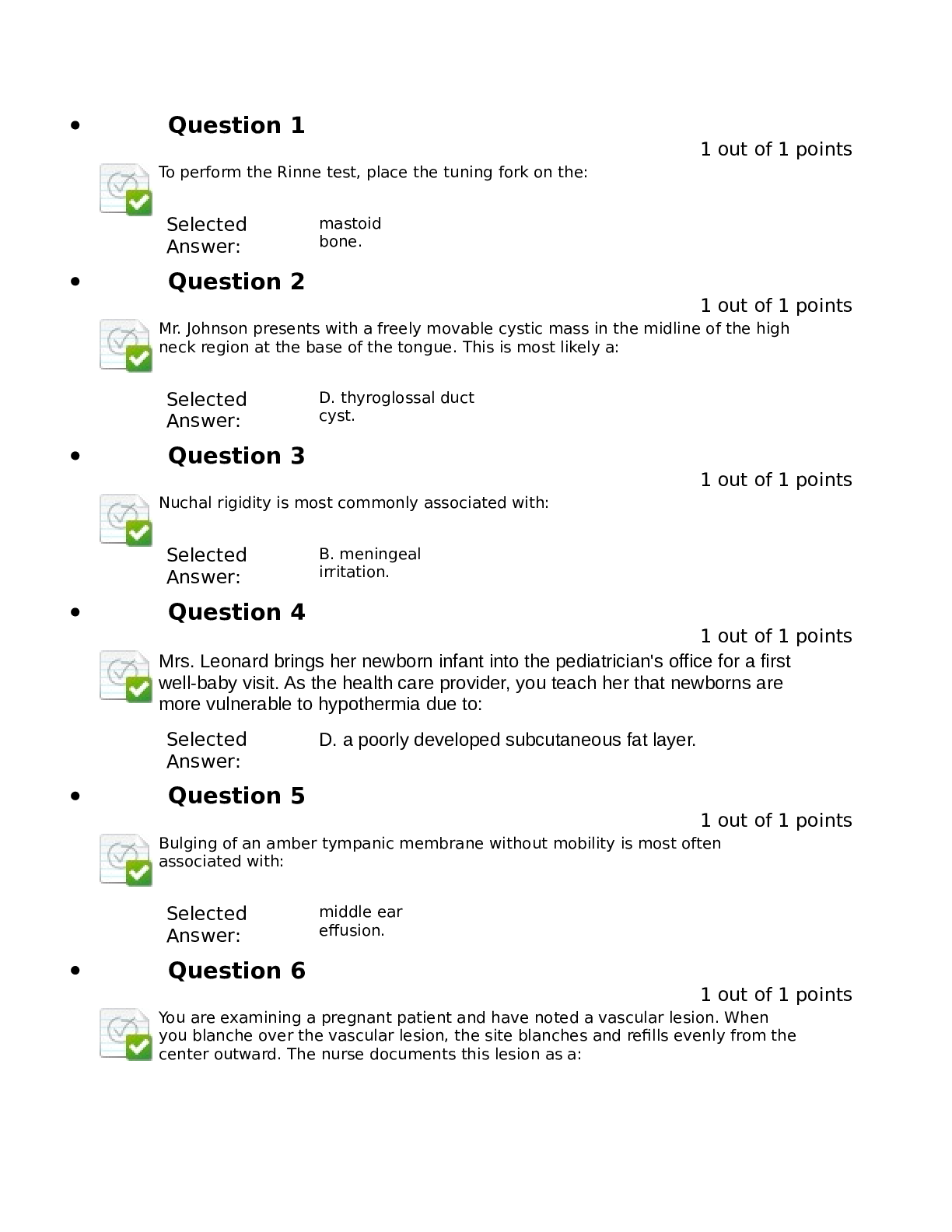


.png)




